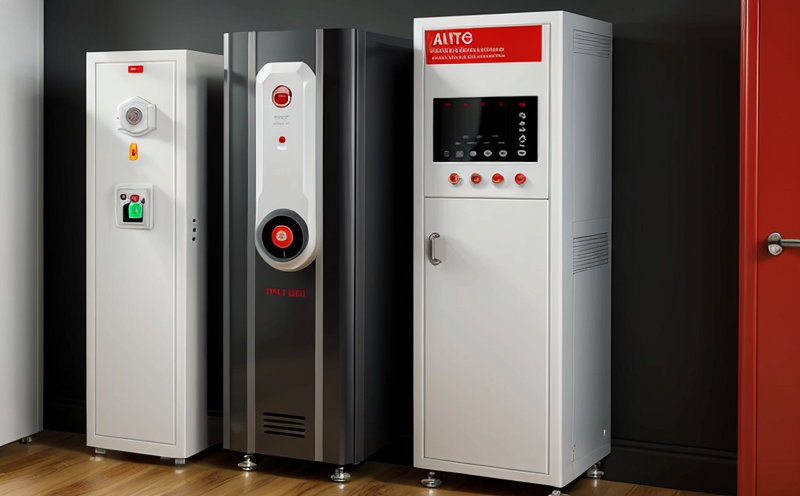Durability and Mechanical Stress Testing of Detectors
In fire safety testing, durability and mechanical stress testing are critical to ensuring that detectors perform reliably under real-world conditions. This service focuses on the evaluation of fire detection devices' ability to withstand various stresses without compromising their functionality or accuracy.
The test procedures simulate the environmental factors and physical stresses that a detector might encounter during its operational life, such as temperature fluctuations, vibrations, shocks, and dust accumulation. These tests are essential for ensuring that detectors maintain their integrity over time, which is crucial given the high stakes involved in fire safety systems.
The testing process typically involves subjecting the detector to controlled conditions designed to mimic potential real-world stressors. For instance, temperature cycling can simulate the effects of seasonal changes or extreme weather events, while vibration tests replicate the impact of nearby machinery. Similarly, shock and drop tests assess the device's resilience against accidental impacts.
Once subjected to these stresses, the detector is rigorously inspected for any signs of damage or performance degradation. Key parameters measured include electrical resistance, signal integrity, response time, and accuracy in detecting smoke or heat. Compliance with relevant international standards such as ISO 8349:2015 for photoelectric smoke detectors or UL 268-10 for ionization smoke alarms is verified.
The testing process is highly specialized to cater to the unique requirements of different types of fire detection devices. For example, linear heat sensors require specific handling during temperature cycling due to their sensitive thermal properties. Similarly, optical smoke detectors need careful calibration post-vibration tests to ensure that they do not produce false alarms.
Quality managers and compliance officers benefit greatly from this service by gaining confidence in the reliability of fire detection systems across various environments. R&D engineers can use these test results to refine product designs and improve performance. Procurement teams, on the other hand, are assured that they are acquiring detectors that meet stringent quality standards.
Industry Applications
- Industrial facilities where continuous monitoring is essential for preventing fires in manufacturing processes.
- Broadcast studios and recording facilities to protect sensitive equipment from potential fire hazards.
- Data centers, where even a small fire could lead to catastrophic data loss.
- Public buildings such as schools and hospitals that require robust fire safety systems for occupant protection.
Benefits
The benefits of durability and mechanical stress testing are profound, particularly in enhancing the overall reliability and longevity of fire detection devices. By identifying potential weaknesses early on, this testing helps manufacturers improve product quality and reduce the risk of costly failures during operation.
For facilities that rely heavily on fire safety systems, such as industrial plants or data centers, these tests are indispensable. They provide peace of mind by ensuring that detectors can withstand harsh environmental conditions without compromising their performance. This not only enhances operational efficiency but also contributes significantly to occupant safety and business continuity.
The testing process also serves as a critical quality assurance tool for manufacturers. By adhering to stringent standards, companies demonstrate their commitment to delivering high-quality products that meet the highest safety expectations. In turn, this can enhance brand reputation and customer trust, fostering long-term relationships with clients.
Industry Applications
- Industrial facilities where continuous monitoring is essential for preventing fires in manufacturing processes.
- Broadcast studios and recording facilities to protect sensitive equipment from potential fire hazards.
- Data centers, where even a small fire could lead to catastrophic data loss.
- Public buildings such as schools and hospitals that require robust fire safety systems for occupant protection.
Use Cases and Application Examples
- In a manufacturing plant, the mechanical stress testing of detectors ensures they can withstand the vibrations from heavy machinery while maintaining accurate smoke detection capabilities.
- In data centers, temperature cycling tests are conducted to ensure that detectors remain functional despite wide variations in ambient temperatures.
- For public buildings like schools and hospitals, durability tests simulate real-world conditions to verify that detectors can operate reliably even under challenging environmental factors.





